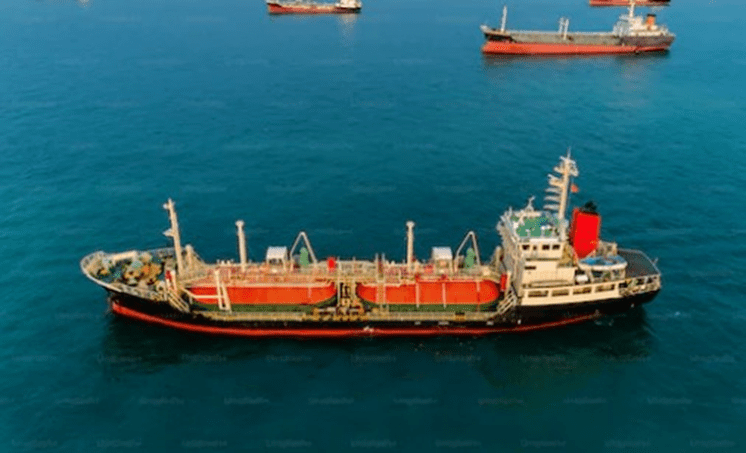Tech
A Comprehensive Guide to Shipping by Sea

In the realm of global logistics, ocean freight remains a cornerstone of efficient and cost-effective shipping. Leveraging vast maritime routes, this method enables the transportation of goods across oceans, connecting continents and powering international trade. This article provides a comprehensive guide on how to ship using ocean freight, covering key steps, considerations, and best practices.
An In-Depth Guide to Seamlessly Shipping Overseas
Understanding Ocean Freight
Ocean freight involves the transportation of goods via container ships across international waters. It’s a versatile and economical choice for shipping large quantities of goods, from heavy machinery to consumer products. Understanding the intricacies of this mode of transport is crucial for optimizing your supply chain.
Selecting the Right Freight Forwarder
The first step in shipping by sea is to choose a reliable freight forwarder. These experts specialize in arranging and overseeing the transportation of goods from point of origin to final destination. They handle essential tasks such as booking cargo space, documentation, customs clearance, and coordinating with carriers. A reputable freight forwarder ensures a smooth and hassle-free shipping process.
Packaging and Container Selection
Proper packaging is paramount to protect your cargo during transit. Goods should be packaged securely to withstand the rigors of sea transport. Moreover, selecting the appropriate container type is crucial. Standard containers, high-cube containers, and specialized containers like refrigerated units are available to accommodate various cargo types.
Documentation and Compliance
Accurate and complete documentation is a cornerstone of international shipping. This includes the bill of lading, commercial invoice, packing list, and any necessary permits or certificates. Compliance with customs regulations and international trade laws is essential to avoid delays or penalties.
Booking Cargo Space
Once your goods are packaged and documentation is in order, it’s time to book cargo space with a shipping line. This involves reserving space on a container vessel for your cargo. It’s advisable to make these arrangements well in advance to secure the most favorable rates and ensure timely departure.

Customs Clearance and Documentation Submission
Before your cargo embarks on its ocean journey, it must clear customs at both the origin and destination ports. This process involves submitting the required documentation, paying any applicable duties or taxes, and adhering to specific import/export regulations of the respective countries.
Cargo Tracking and Visibility
Many modern freight forwarders offer advanced tracking systems that provide real-time visibility into the status and location of your cargo. This technology allows you to monitor your shipment’s progress, anticipate arrival times, and address any potential issues promptly.
Insurance for Cargo Protection
While sea freight is a reliable mode of transportation, unforeseen circumstances such as extreme weather or accidents at sea can occur. To safeguard your investment, consider obtaining marine cargo insurance. This coverage provides financial protection in the event of loss or damage to your goods during transit.
Port Handling and Delivery
Upon arrival at the destination port, your cargo will undergo unloading and handling procedures. From there, it may be transported via truck, train, or barge to its final destination. Coordination with a local logistics partner or freight forwarder can ensure a seamless transition from port to end-user.
Evaluate and Optimize the Process
After your cargo reaches its destination, take the time to evaluate the shipping process. Consider factors such as transit time, costs, and any unforeseen challenges. This feedback loop allows you to refine your shipping strategy for future shipments and maximize efficiency.
Conclusion
Navigating ocean freight requires careful planning, attention to detail, and collaboration with experienced logistics partners. By following these steps and best practices, you can harness the power of sea transport to connect with global markets, expand your reach, and ensure the timely delivery of goods across continents. Embracing ocean freight as a vital component of your supply chain strategy can lead to enhanced efficiency, cost savings, and a competitive edge in the global marketplace.

-

 Health5 years ago
Health5 years agoAdvantages and Disadvantages of Milk
-

 Tech4 years ago
Tech4 years ago6 Tips to Improving E-Commerce Websites
-

 Home5 years ago
Home5 years agoAdvantages and Disadvantages of Village Life in Points
-

 Travel5 years ago
Travel5 years agoAdvantages and Disadvantage of Travelling
-

 Sports3 years ago
Sports3 years agoThe benefits of playing an online live casino
-

 Tech5 years ago
Tech5 years ago10+ Advantages and Disadvantages of Mobile Phones in Points
-

 Tech5 years ago
Tech5 years agoEssay on Advantages and Disadvantages of Offline Shopping
-

 Tech5 years ago
Tech5 years ago8+ Advantages and Disadvantages of Motorcycle |Having Bike